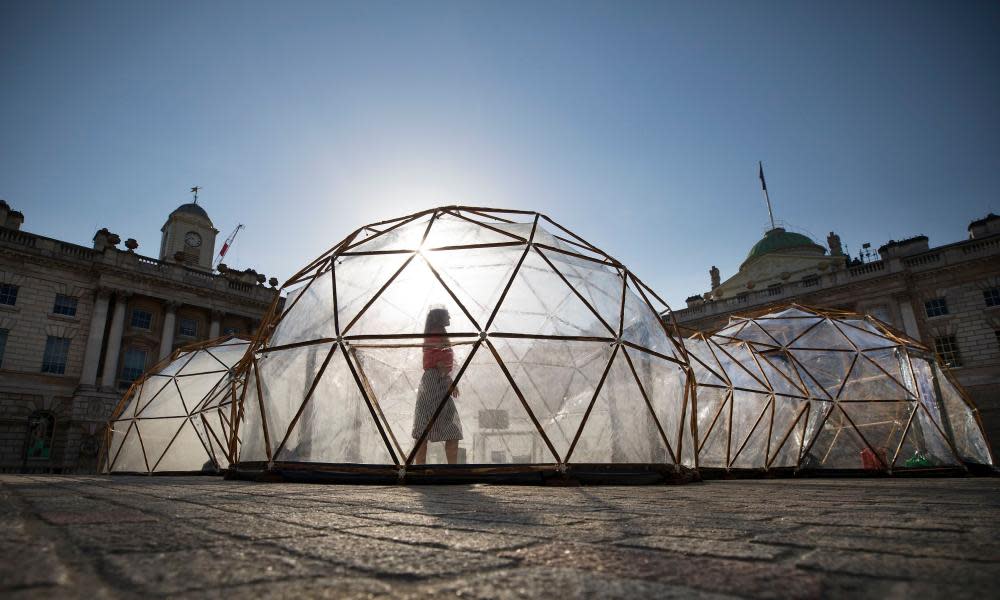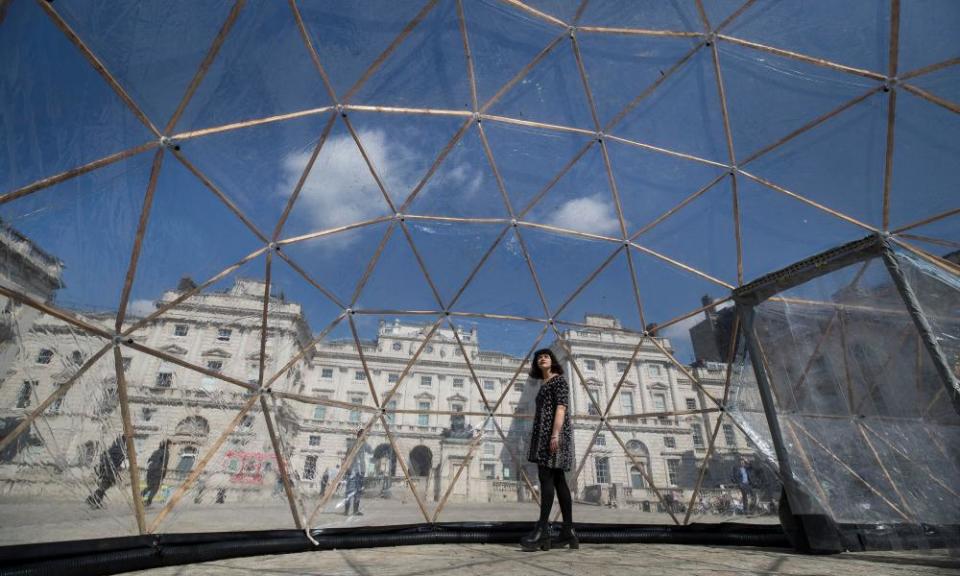London 'pollution pods' let you sample the smog in Beijing and Delhi

New Delhi: the suffocating smell of old cars and industry. São Paulo: enough ethanol to make your eyes water. And in London, a scent called Living Diesel.
Those are the dominant notes of those cities’ contaminated air, according to an “artist’s approximation” that aims to raise awareness of the problem of pollution around the world.
Londoners are invited to taste the air of some of the world’s most polluted cities – including their own – inside British artist Michael Pinsky’s Pollution Pods, on display in the courtyard of Somerset House.
Inside the ring of five linked domes, Pinsky has safely recreated five different atmospheres, from the pristine peninsula of Tautra island in Norway to smoggy Beijing.
Michael Pinsky’s #PollutionPods, in the forecourt of Somerset House, claim to reproduce the air pollution conditions of five cities pic.twitter.com/a6gwO4M8Hg
— Elle Hunt (@mlle_elle) April 19, 2018
Each pod is climatically controlled to emulate the temperature and the air quality – as well as the fragrance – of each destination, inviting visitors to compare the quality of global polluted environments. “I have tried to distil the whole bodily sense of being in each place,” Pinsky has said of his work.
Three column heaters channel the oppressive heat of New Delhi, while a haze machine shoots out plumes of “smog”, which hangs in the pod, acrid and visible. No one lingers there, instead pressing on to the comparative comfort of “Beijing”.
“Not too bad,” observes one visitor passing through, as though at a wine tasting.
Two young women entering the Tautra pod from São Paulo’s make a beeline for the air purifier. 'Breathe it in,' sighs one
To recreate the polluted atmosphere of São Paulo, Pinsky evoked the ethanol-based fuel used in many cars in the megacity, which produces ozone and formaldehyde when it breaks down in the atmosphere. “The sensation is to try and make your eyes water, almost,” says Stephanie Pilling, a spokeswoman for Somerset House.
Pinsky’s artist’s approximation of each environment was informed by his own visits and scientific findings on their different pollutants, then created with the help of specialists such as the London-based scent expert Lizzie Ostrom, says Pilling.
“In the London room there’s a scent called Living Diesel, as the main cause of air pollution here is cars.”
The clean air of Tautra island, Norway, was recreated in collaboration with Airlabs, an air purification company, which stripped it of pollutants.

“That is the cleanest air you can find anywhere in London,” says Pilling, gesturing to the entry pod. “It’s better to be standing in there than it is in the courtyard, essentially.”
Two young women entering the Tautra pod from São Paulo’s make a beeline for the air purifier. “Breathe it in,” sighs one, leaning into the blast of pristine air.
Pinsky was commissioned to make Pollution Pods by the Norwegian University of Science and Technology, Trondheim, for the Climart project, studying how visual art might impact perceptions of climate change. It was brought to London by Somerset House ahead of Earth Day on Sunday.
Visitors are advised on entry that the Pollution Pods “may not be a suitable environment” for those who suffer from respiratory conditions, have adverse reactions to enclosed spaces or are accompanied by small children or babies. They are also offered an information sheet of practical ways to reduce exposure to air pollution in London.
Tautra, Norway. Low levels of nitrogen dioxide and particulate matter. The green light for outdoor sports and cycling. Almost a relief on entry pic.twitter.com/JYuLNJ83GK
— Elle Hunt (@mlle_elle) April 19, 2018
Pilling says Pinsky’s aim was to encourage people to be mindful of the issue of air pollution and to consider the impact of their consumerism on heavily polluted cities in India and China.
“Some people have said the New Delhi pod is just unbearable,” adds Pilling. “But that’s what people experience every single day.”
Michael Pinsky’s Pollution Pods are on display at the Edmond J Safra Fountain Court of Somerset House, London, until 25 April. Pinsky will give a free talk at 1.30pm on Sunday 22 April.

 Yahoo News
Yahoo News 
